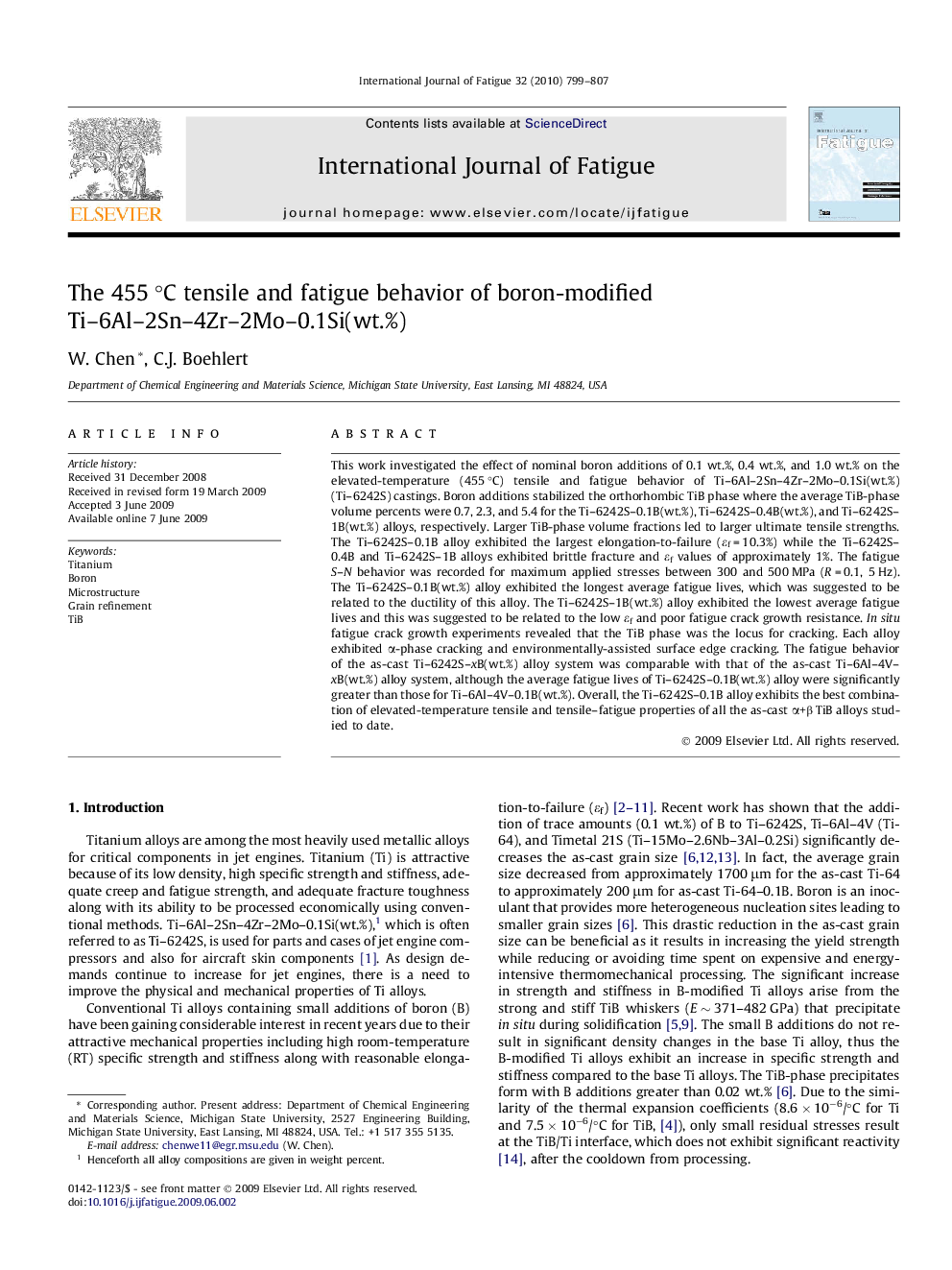| Article ID | Journal | Published Year | Pages | File Type |
|---|---|---|---|---|
| 775560 | International Journal of Fatigue | 2010 | 9 Pages |
This work investigated the effect of nominal boron additions of 0.1 wt.%, 0.4 wt.%, and 1.0 wt.% on the elevated-temperature (455 °C) tensile and fatigue behavior of Ti–6Al–2Sn–4Zr–2Mo–0.1Si(wt.%) (Ti–6242S) castings. Boron additions stabilized the orthorhombic TiB phase where the average TiB-phase volume percents were 0.7, 2.3, and 5.4 for the Ti–6242S–0.1B(wt.%), Ti–6242S–0.4B(wt.%), and Ti–6242S–1B(wt.%) alloys, respectively. Larger TiB-phase volume fractions led to larger ultimate tensile strengths. The Ti–6242S–0.1B alloy exhibited the largest elongation-to-failure (εf = 10.3%) while the Ti–6242S–0.4B and Ti–6242S–1B alloys exhibited brittle fracture and εf values of approximately 1%. The fatigue S–N behavior was recorded for maximum applied stresses between 300 and 500 MPa (R = 0.1, 5 Hz). The Ti–6242S–0.1B(wt.%) alloy exhibited the longest average fatigue lives, which was suggested to be related to the ductility of this alloy. The Ti–6242S–1B(wt.%) alloy exhibited the lowest average fatigue lives and this was suggested to be related to the low εf and poor fatigue crack growth resistance. In situ fatigue crack growth experiments revealed that the TiB phase was the locus for cracking. Each alloy exhibited α-phase cracking and environmentally-assisted surface edge cracking. The fatigue behavior of the as-cast Ti–6242S–xB(wt.%) alloy system was comparable with that of the as-cast Ti–6Al–4V–xB(wt.%) alloy system, although the average fatigue lives of Ti–6242S–0.1B(wt.%) alloy were significantly greater than those for Ti–6Al–4V–0.1B(wt.%). Overall, the Ti–6242S–0.1B alloy exhibits the best combination of elevated-temperature tensile and tensile–fatigue properties of all the as-cast α+β TiB alloys studied to date.
